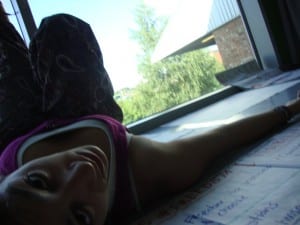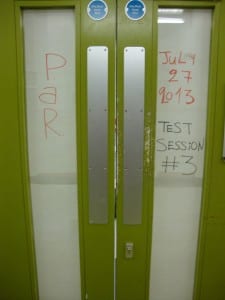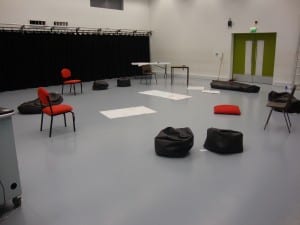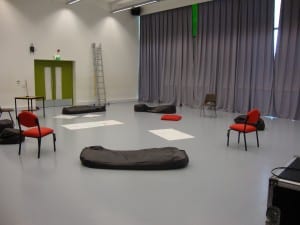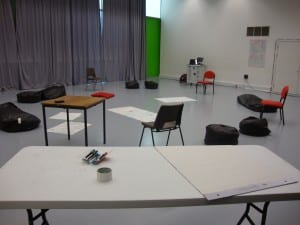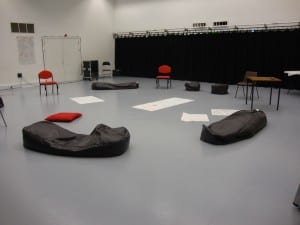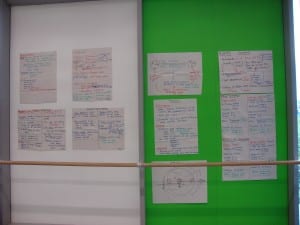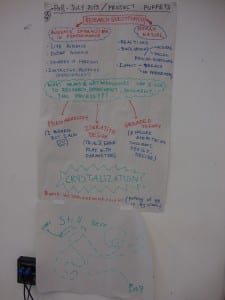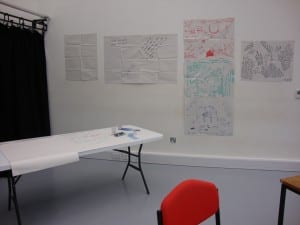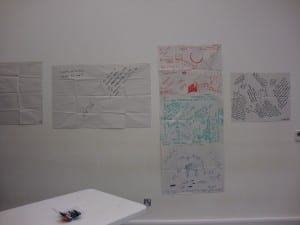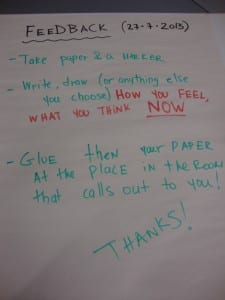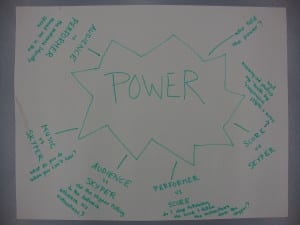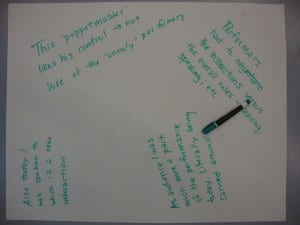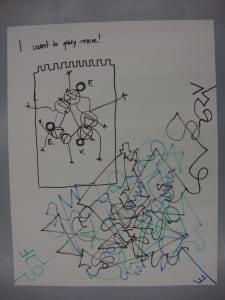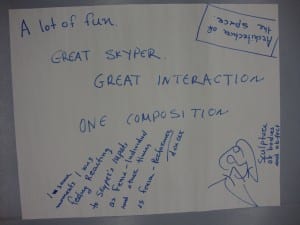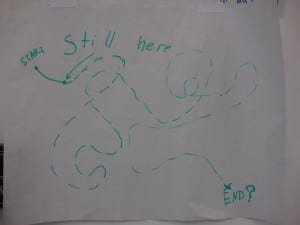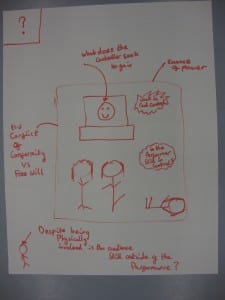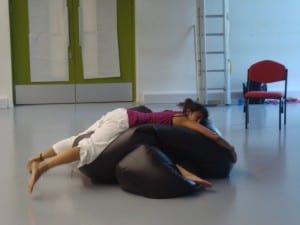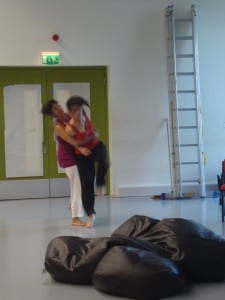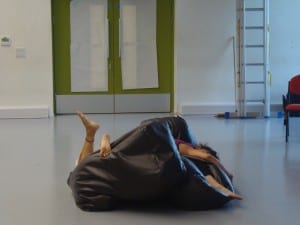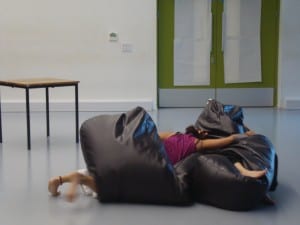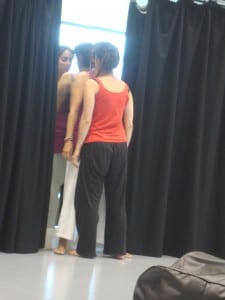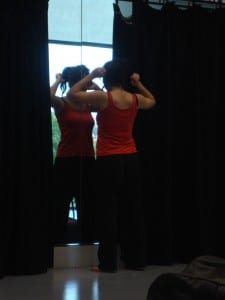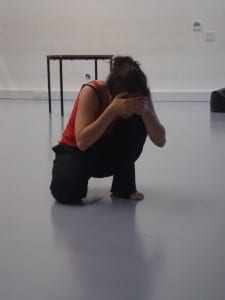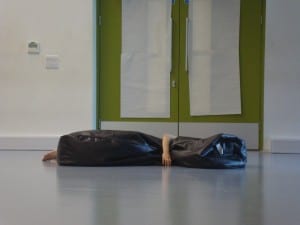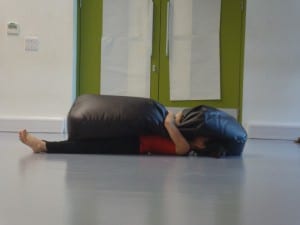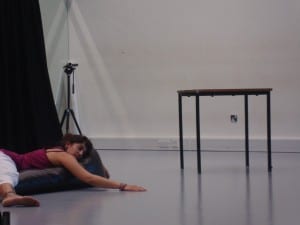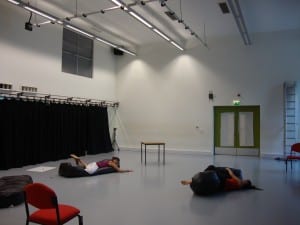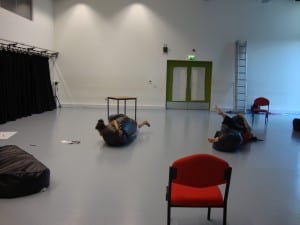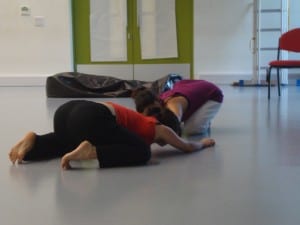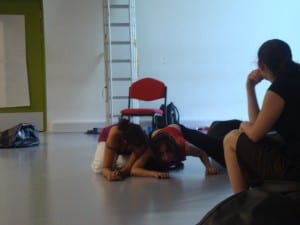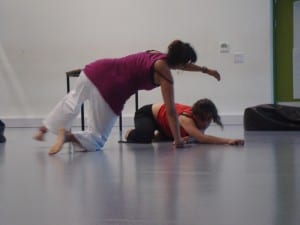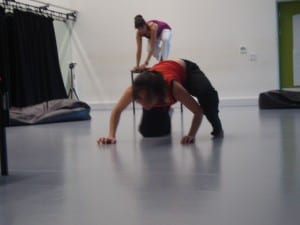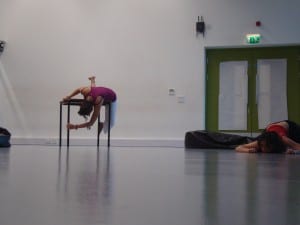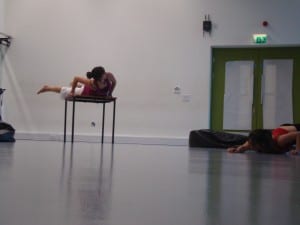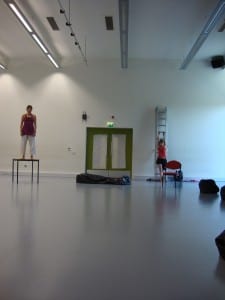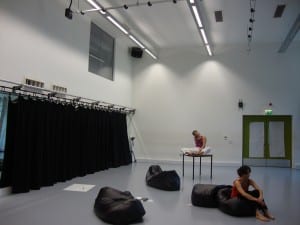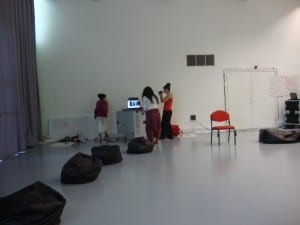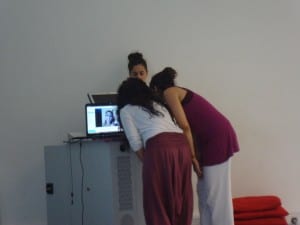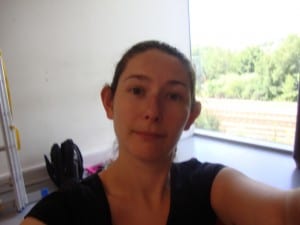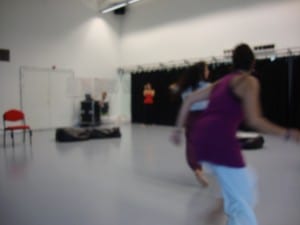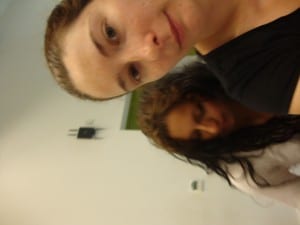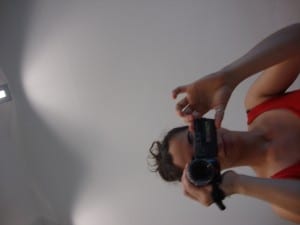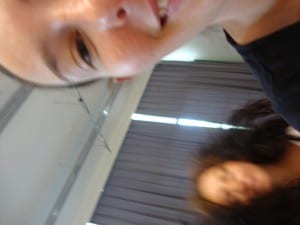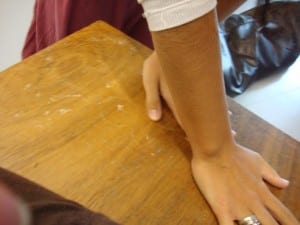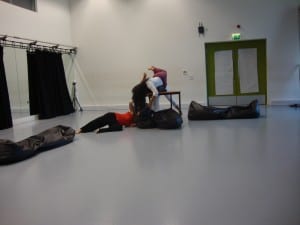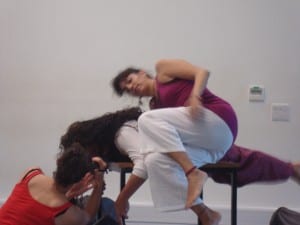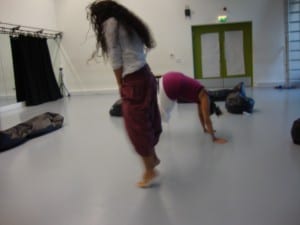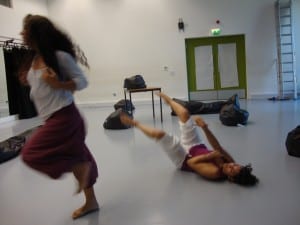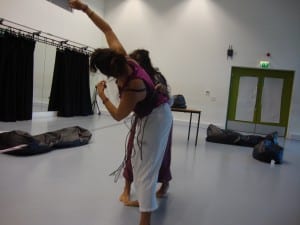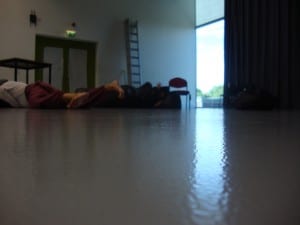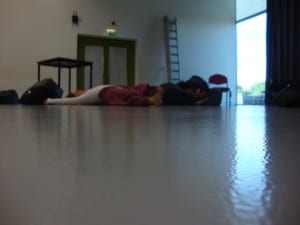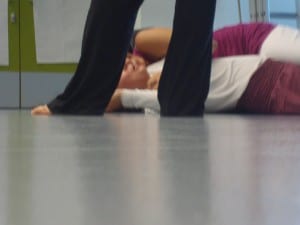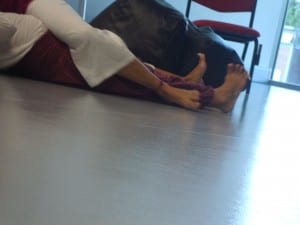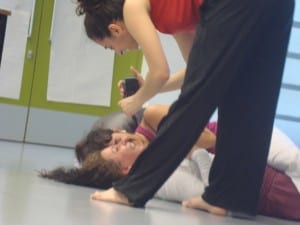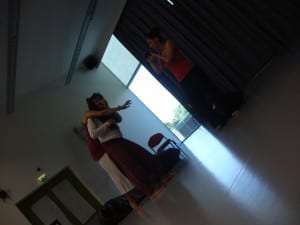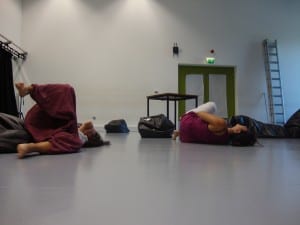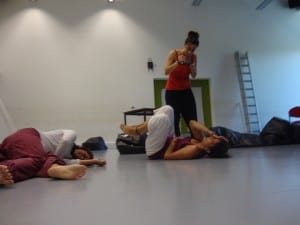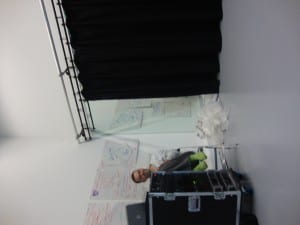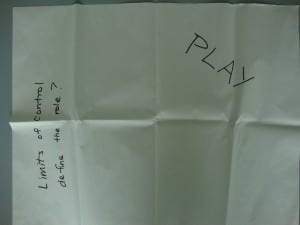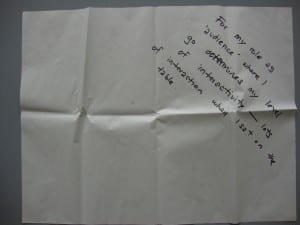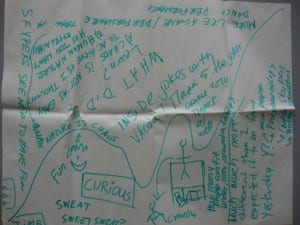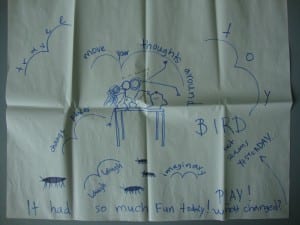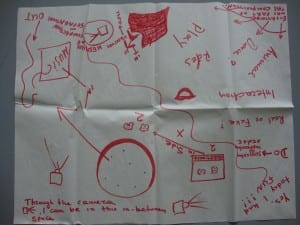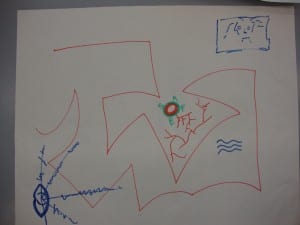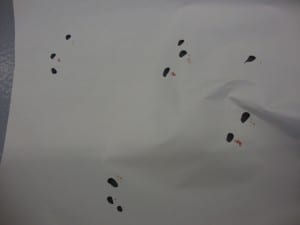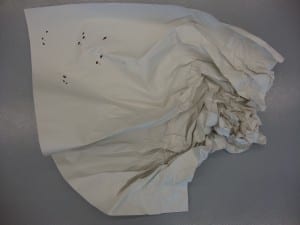PUPPETS
More and more in the past years improvisation oriented performances have been staged and audience interaction explored and encouraged. Various approaches have been used to facilitate different degrees and ways of audience interaction in a performance. I want to experiment/ research different types of audience and the degree of freedom that can be given to an audience, how that affects a performance and also how it affects the rest of the audience and the performers as well.
Having read ‘Audience as Participant in Performance Art’
( Helge Meyer, 2009) and also having a dual background (dancing/choreographing and electrical engineering) I was inspired to try different things in order to combine the artistic, technological and human phsyco-emotional aspects. Specifically, in the first stage of my research I have chosen an approach that compliments my dual background as well as the lack of availability of a live audience, staging pocket performances with distant audiences via skype.
The questions then become:
- Can a distant audience fully control a performance?
- To what degree is the artist/ “choreographer” responsible for the final product?
- Is he/she responsible for the final product (performance) or just for the process?
- What about the performers? What rules do they abide to? What is their part in the process and the final product?
- What is the impact such a performance has all participants (performers, audience/skypers, “choreographer”)?
- And finally, in what way can such a performance be handled so as to have a sociopolitical impact as well as an artistic one?
These questions are to be addressed and explored one by one at first in the form of a work in progress and then the connections between them will slowly become cleared and the initial question/project/experiment handled as a whole.
Crystallization (Ellingson (2008)) will be my course of action for this research project, as I feel the need to draw from various points of view, various techniques, various methodologies. The main two and the ones I will focus on during this first leg of my journey are Iterative Design and Phenomenology (Kozel (2008)), with a slightly twisted hint of Ethnograohy and Heterophenomenology. When trying to decide on my initial approach a number of articles and books caught my eye and influenced my train of thought in ways that I cannot yet clearly pinpoint. There are however a couple worth mentioning as their influence will be clear in my work even from its early stages. Audience empathy: a phenomenological method for mediated performance (Corness , Carlson, Schiphorst, 2011) and Turning Points in Qualitative Research: Tying Knots in the Handkerchief,( Yvonna S. Lincoln,Norman K. Denzin, 2003) where two of my first encounters and thus their impact was the strongest. Apart from reading material thought my idea drew influence from my encounter and short cooperation with artist Georg Hobmeier, his work Errors,Glitches and Other Mistakes (seen on May 24th 2013) and his long term project ‘Area – choreographic operations in public space’ (2010 – ongoing), a version of which I took part in.
Having said that, the time has come to shed some light on the practical aspects of this research project. I will begin by outlining the entirety of the project, bullet pointing the possible versions and then move on to specifics of the proposed initial experiment.
The concept puts the performers (2 or 3 to begin with) on the stage, perhaps with the audience all around not just in front whether it is a live or a distant audience. The performers will be getting live feed, each from a different source either by wearing headphones and getting feed from a microphone in a live performance or via computer screens and skype. Members of the audience ( I will call them instructors if live, skypers if distant) will then give instructions to each performer. Each performer will receive their own instructions and in some cases will not be able to hear what the others are being told to do. It is here that the first question might be addressed, by experimenting with how much we allow the audience (instructors/skypers) to improvise their instructions. Do I, as director/choreographer provide them with lists of potential key phrases? Do I let them completely free? Various combinations are to be tried: specific commands to choose from, suggestions of a more abstract nature, or complete freedom. Complete freedom seems to be an interesting approach from a political as I find it very interesting to study what a people choose to order others to do from a safe distance! It is a study of human behavior and human nature. Incognito members of the audience can serve as observers, documenting the behavior of those giving instructions, being close enough to hear those instructions and witness both the order and the way that order is acted out by the selected performer.
On another occasion the audience could give the instructions up close and personal, really becoming part of the action with two possibilities a) just to direct and observe, b) to participate fully in the action. By placing the audience in the spotlight and shedding them of the safety provided by distance we get the chance to see different reactions and different choices.
Another interesting dilemma is whether or not the instructors/skypers can hear/see each other. They could be placed in sound proof compartments (or simply far away from each other) thus not knowing what direction the other performers are given to provoke their current actions and simply deciding what how to guide his/her “own” performer based on what they see. On the other hand they could be next to each other, a situation that would create multilevel interaction: Between audience members (instructors/skypers) and the performer each speaks to, between the instructors/skypers and between the performers themselves. It then becomes more personal, perhaps more competitive and the performers become puppets in their hands, with direct intentions given to them to perform. I would like to try different combinations.
Another thing to take into account is the frequency with which the instructors/skypers will alternate. How long does one stay on, how much is one person allowed to guide the performance? The same members could remain from start to finish and that would mean they would in fact create their own story, or changes could be made during the performance for a more random based process.
In addition to that, another aspect to be explored is the relationship of music/sound to the performance:
• A set score/selection can be made ahead of time, familiar to the performers
• A selection of musical pieces/sound effects (including silence) can play randomly
• Someone can be in charge of sound editing and improvise as to what will accompany the performance
• Members of the audience can also control this aspect of the performance, most probably using a wide selection of music/sounds from a computer.
The final parameters to consider will be duration and live documentation.
As far as duration is concerned it could be a series of short (10-15 minutes) experimental pieces based on a trial and error framework, a “regular” one hour show or something lasting a few hours or even a whole day, with performers alternating.
The documentation can be written as mentioned above, by specific people recruited for this and moving incognito among the audience members, or audiovisual. Photographs or video both of the performers and of the audience can serve as material to study and also as material to be used in future performances as an extra parameter to consider. Mostly though it interests me to experiment with whether or not the performers and the audience (instructors/skypers) know they are being documented and what changes in their behavior each time. This project is for me both an experiment on improvisation and the degrees of freedom in it but also a study of human nature.
As a start and mainly due to the current circumstances I have chosen to do the skype version experimenting with 2 performers, 2 skypers, 1 observer, 1 music operator and 1 camera (hidden and then obvious). I will undertake multiple roles, in order to change perspective and gather as much data as I can both from witnessing and from actively participating. I do not expect a final product at this stage, only an initial idea of where this experimental series of performances can lead me, what impact it can have on the art world and what it can teach me and anyone else who expressed the desire, about the mysteries of human nature.
Corness, G, Carlson K. and Schiphorst T., (2011) Audience Empathy: A Phenomenological Method for Mediated Performance. Proceeding
C&C ’11 Proceedings of the 8th ACM conference on Creativity and cognition
pp 127-136)
Elinson, L. (2008) Introducion to Crystalization, Engaging Crystalization in Qualitative Research: An Introduction. London: Sage, pp1-28
Gnarl Fest (2013) – Hobmeier Georg, Errors, Glitches and Other Mistakes in The Life of an Uredeemed Technology Lover, programme , Lincoln, UK, LPAC theatre.
Helge, M. (2009) Audience as Participant in Performance Art, (written for “Inter Art Actuel”, Canada [online] Available from http://dl.acm.org/citation.cfm?id=2069641 [Accessed July 2013].
Hobmeier Georg , Area, Choreographic Operations in Public Space, Online: http://www.openarea.at/area_web/htm/about.php?BG_IMG_Name=bg_06.jpg (Accessed 23 July 2013)
Kozel, Susan (2008), ‘Resonance’ Closer: Dance, Technology, Phenomenology, Cambridge: MIT Press, pp24-55
Lincoln Yvonna S., Denzin Norman K.(ed) , (2003) Turning Points in Qualitative Research: Tying Knots in the Handkerchief, Walnut Creek California: Altamira Press.
